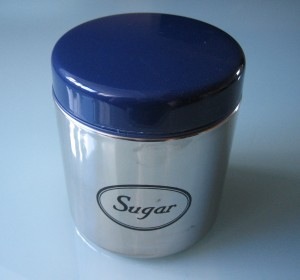Take a look in your fridge and in your cupboards. What’s in there? Why did you buy it and when? Sometimes figuring out what to buy and eat is really tough. Here are a baker’s dozen categories. Which do you fall into most frequently?
1. Are you a bargain shopper looking to get the largest amount of food for your money — so you buy a dozen of what’s on sale or two of the gigantic size at Costco? Check your cupboard or the back of your fridge there still might be some “bargains” left over from two years ago.
2. Do you look for the most calories for your money (supersize me) — the biggest bang for your buck? This often goes hand in hand with #1 above.
3. Do you want the best nutrition for your money so you shop in CSAs (Community Supported Agriculture) or go on the hunt for country farm stands? Do you then end up with so much produce that some of it rots and you have to toss it –- or, you’re so overloaded with kale or spinach that you never want to look at it again?
4. Do you buy only what you want to eat – with no regard to cost, calories, or meal planning of any kind? My guess is that most people in this group are younger than 35.
5. Do you buy food that you think, in the interest of your health or your family’s, that you and/or they should eat? The problem is that a lot of these foods may not be what you want to prepare and what no one wants to eat. The food you and your family like probably disappears quickly and the stuff that no one really likes ends up feeding the garbage pail.
6. Do you buy special or celebratory food because it’s someone’s birthday, or Thanksgiving, or Easter, or Halloween? Do you really buy it because of holiday traditions or because the holiday has given you an excuse to buy – and indulge – in what you ordinarily wouldn’t?
7. How about the food you’ve always wanted to try and you bought on the spur of the moment because you happened to see it in the store. Then you got the food home and realized that you didn’t know how to prepare it or found out that the preparation is way too complicated – or that your spouse or partner really hates it.
8. What about the product of the moment – which might fall into any number of categories. It could be trendy, the latest low-fat wonder, or the cake mix your neighbor said was so good. Maybe it’s good, maybe not.
9. Then there’s the diet foods: the low or no fat, low or no sugar, fiber rich, reduced calorie food you bought in an endless quest for the miracle food that won’t pack on the pounds.
10. What about “nutrition” foods – the ones with claims plastered all over the label that they can prevent or cure just about anything?
11. Or, the convenience foods – the stuff, probably already prepared and/or processed, frozen, or take-out — that you grab when you are totally exhausted or exasperated and you want to get the food on the table and not have anyone complain about it.
12. Let’s not forget the craving foods – the sugar, fat, and salt foods that keep you coming back for more.
13. And, last but not least, the reward foods — the “I’ve had such a tough day” or “I’ve been so good all day” food that almost always packs a whopper of a sugar, fat, and caloric punch.
Sometimes there is a time and place for food from any of these categories. But, if you are a mindful, not mindless, eater you might want to think about the category you land in most frequently.
Did I miss any categories? Please let me know what you think.




